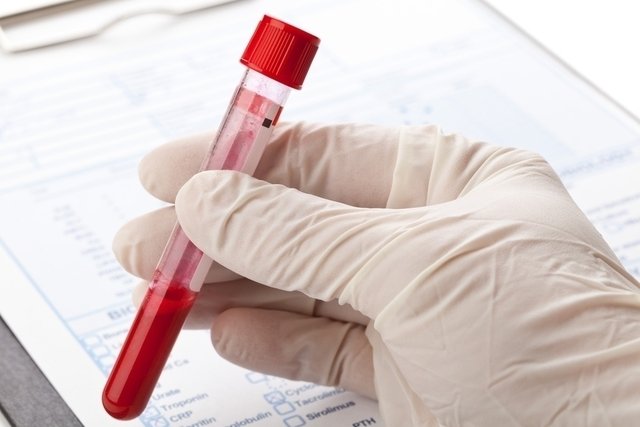Lipase is a digestive enzyme produced mainly in the pancreas and its function is to break down dietary fat into smaller molecules, so that they can be absorbed by the intestine. In addition to the pancreas, the mouth and stomach also produce some lipase to facilitate digestion.
The lipase test is normally indicated to investigate changes in the pancreas, mainly, but it can also be recommended to investigate Crohn’s disease, kidney failure or tumors in the gastrointestinal system.
The lipase test is usually carried out together with the measurement of amylase in the blood, to better diagnose the condition. Learn more about the amylase test.

What is the lipase test for?
The lipase test is used to evaluate the levels of lipase circulating in the blood, especially when there is suspicion of changes in the pancreas, such as pancreatitis, as the pancreas is responsible for producing a greater amount of lipase and, due to inflammation in the organ, it is It is possible that there is an increase in the levels of this enzyme in the blood, remaining elevated for a long period. Learn more about pancreatitis.
Furthermore, the lipase test also serves to assist in the diagnosis of other changes, such as Crohn’s disease, kidney failure or tumors, for example, as lipase levels may be altered in these conditions.
When is indicated
The lipase test is normally indicated by the doctor when the person presents signs and symptoms suggestive of digestive and/or endocrine changes:
- Fever;
- Severe abdominal pain;
- Fat in feces;
- Weight loss;
- Nausea and vomiting.
To be able to conclude the diagnosis, the doctor normally recommends that the lipase test be carried out in conjunction with the measurement of amylase in the blood and, in some cases, in the urine, as this makes the diagnosis more accurate, as In some conditions, lipase levels may not be altered enough to confirm the disease, making it necessary to evaluate other parameters.
How to understand the result
The lipase reference value is up to 60U/L, and the test is considered normal when the result is lower than this reference value. However, values may vary according to the laboratory in which the test is performed and the technique used to perform the dosage.
Paste another
High lipase is when a concentration greater than 60 U/L of this enzyme is identified, or greater than the reference value indicated by the laboratory, which may be due to:
- Acute pancreatitis;
- Celiac disease;
- Perforated peptic ulcer;
- pancreatic pseudocyst;
- Pancreatic cancer;
- Obstruction of the pancreatic duct;
- Bowel obstruction;
- Acute appendicitis;
- Inflammatory bowel disease;
- Crohn’s disease;
- Renal insufficiency;
- Hepatitis C;
- Cystic fibrosis;
- Lymphoma;
- Chronic liver disease;
- Eating disorders, such as anorexia and bulimia;
- Alcoholism;
- Use of medications, such as codeine, morphine, methacholine or cholinergics.
Acute pancreatitis is the main cause of high lipase and, in these cases, lipase levels can be up to 10 times higher than normal, rising up to 8 hours after a pancreatitis attack and remaining high for up to 14 days after the attack. To confirm the diagnosis, the doctor may recommend an amylase test and imaging tests.
Bibliography
- FERREIRA, Margarida; COELHO, Regina; LUZIO, José; COUTINHO, Paula. Elevation of lipase and amylase in critically ill patients. Retrospective study. Rev Bras Ter Intensiva. Vol 20. 4 ed; 362-369, 2008
- HAMEED, Ahmer M.; LAM, Vincent W.; PLEASS, Henry C. Significant elevations of serum lipase not caused by pancreatitis: a systematic review. HPB. Vol 17. 99-112, 2014

Sign up for our newsletter and stay up to date with exclusive news
that can transform your routine!
Warning: Undefined array key "title" in /home/storelat/public_html/wp-content/plugins/link-whisper-premium/templates/frontend/related-posts.php on line 12
Warning: Undefined array key "title_tag" in /home/storelat/public_html/wp-content/plugins/link-whisper-premium/templates/frontend/related-posts.php on line 13



